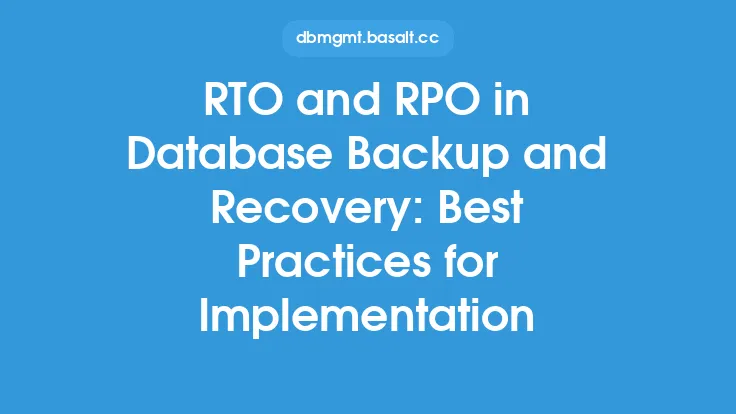When designing and implementing a database, one of the key considerations is how to structure the data to achieve optimal performance, scalability, and maintainability. Normalization is a widely accepted principle of database design that aims to minimize data redundancy and dependency by organizing data into separate tables with well-defined relationships. However, in certain situations, denormalization can be a useful technique to improve database performance, particularly in cases where data retrieval is a bottleneck. Denormalization involves intentionally deviating from the principles of normalization to achieve specific goals, such as reducing the number of joins required to retrieve data or improving data locality.
Introduction to Denormalization
Denormalization is a database design technique that involves storing data in a way that is not fully normalized. This means that some data may be redundant or duplicated, and the relationships between different pieces of data may not be as clear-cut as they would be in a fully normalized database. Denormalization can be used to improve the performance of certain types of queries, particularly those that involve complex joins or subqueries. By storing data in a denormalized form, the database can reduce the number of joins required to retrieve the data, which can lead to significant performance improvements.
Types of Denormalization
There are several types of denormalization, each with its own strengths and weaknesses. Some common types of denormalization include:
- Pre-aggregation: This involves storing pre-computed aggregate values, such as sums or averages, in a separate table. This can improve the performance of queries that require aggregate calculations.
- Pre-joining: This involves storing the results of a join operation in a separate table. This can improve the performance of queries that require complex joins.
- Data duplication: This involves storing duplicate copies of data in multiple tables. This can improve the performance of queries that require data from multiple tables.
- Summary tables: This involves storing summary data, such as totals or counts, in a separate table. This can improve the performance of queries that require summary data.
Best Practices for Denormalization
While denormalization can be a powerful technique for improving database performance, it requires careful planning and execution to avoid introducing data inconsistencies or other problems. Some best practices for denormalization include:
- Only denormalize what is necessary: Denormalization should only be used to address specific performance problems or requirements. It is not a general-purpose solution for improving database performance.
- Use denormalization judiciously: Denormalization can introduce data inconsistencies and other problems if not used carefully. It is essential to weigh the benefits of denormalization against the potential risks and to use it only when necessary.
- Monitor and maintain denormalized data: Denormalized data requires regular monitoring and maintenance to ensure that it remains consistent and up-to-date.
- Use indexing and caching: Indexing and caching can be used to improve the performance of denormalized data, particularly in cases where the data is frequently accessed.
Design Considerations for Denormalization
When designing a denormalized database, there are several key considerations to keep in mind. These include:
- Data consistency: Denormalization can introduce data inconsistencies if not managed carefully. It is essential to ensure that denormalized data is consistent with the underlying normalized data.
- Data freshness: Denormalized data can become stale if not updated regularly. It is essential to ensure that denormalized data is updated in a timely manner to reflect changes to the underlying data.
- Query patterns: Denormalization should be designed to support specific query patterns or use cases. It is essential to understand the query patterns and use cases that the denormalized data will support.
- Storage and performance: Denormalization can impact storage and performance requirements. It is essential to consider the storage and performance implications of denormalization when designing a denormalized database.
Implementation Considerations for Denormalization
When implementing a denormalized database, there are several key considerations to keep in mind. These include:
- Data loading and updating: Denormalized data requires regular loading and updating to ensure that it remains consistent and up-to-date.
- Data validation: Denormalized data requires regular validation to ensure that it is consistent with the underlying normalized data.
- Query optimization: Denormalized data requires query optimization to ensure that queries are executed efficiently.
- Monitoring and maintenance: Denormalized data requires regular monitoring and maintenance to ensure that it remains consistent and up-to-date.
Common Use Cases for Denormalization
Denormalization is commonly used in a variety of scenarios, including:
- Data warehousing: Denormalization is often used in data warehousing to improve the performance of complex queries and to support business intelligence and analytics applications.
- Real-time analytics: Denormalization is often used in real-time analytics to improve the performance of queries and to support real-time decision-making.
- High-performance applications: Denormalization is often used in high-performance applications, such as gaming or financial trading, to improve the performance of queries and to support low-latency requirements.
- Big data: Denormalization is often used in big data applications to improve the performance of queries and to support large-scale data processing.
Conclusion
Denormalization is a powerful technique for improving database performance, particularly in cases where data retrieval is a bottleneck. By intentionally deviating from the principles of normalization, denormalization can reduce the number of joins required to retrieve data, improve data locality, and support specific query patterns or use cases. However, denormalization requires careful planning and execution to avoid introducing data inconsistencies or other problems. By following best practices and considering design and implementation factors, denormalization can be a valuable tool for improving database performance and supporting a wide range of applications and use cases.





